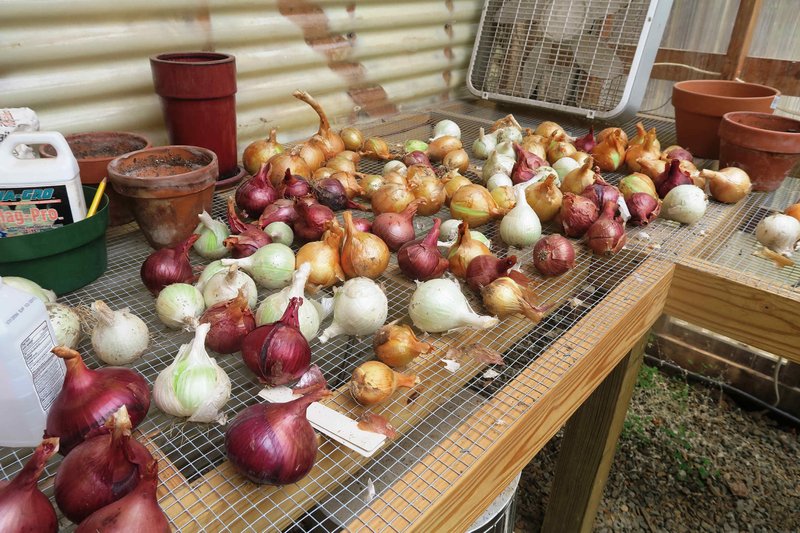MARCH
We have seen highs and lows in February and more rain than we wanted, so I think we can safely say we are happy to see March. Weather has been anything but normal and predicting what is coming is anyone's guess. Early indicators are that the first week of March is going to be colder than normal, so gardeners need to pay attention. Plants are beginning to come out of dormancy, and that can be when they are most susceptible to cold damage. Low growing perennials or dwarf shrubs can easily be covered with inverted boxes or pots, but it is hard to cover a fruit tree.
Vegetable gardeners were champing at the bit to plant in mid-February, but rainy weather delayed that a bit. Now is a great time to plant the cool season crops including cabbage, broccoli, potatoes, onions and carrots. Some of these vegetables we grow from seed, while others should be planted as small plants or transplants. Transplants are now available at most garden centers and will be for another month or more. If you see tomatoes or peppers -- these are warm season vegetables, and unless you have a greenhouse, bypass them. They should not be planted until mid-April. For now be satisfied with plants that like cool weather. Transplants should be available for broccoli, cabbage, cauliflower, Brussels sprouts, Swiss chard and even lettuce (which is easily grown from seed). Spinach plants may also be available. Onions will be sold as either onion sets (small dry bulbs) or onion transplants (small bundles of thin onion plants). If you want to grow larger onions, it is usually best to start with the small plants versus the sets, however both do well. If you are using sets, the larger ones are used to produce the smaller "green onions" while the smaller ones that are less than a dime in diameter can produce the larger onion bulbs. Carrots, lettuce, radishes and greens can be planted from seed. Planting can continue through mid-April, then it will be time to plant the warm season vegetables too.
Spring bulbs are blooming across the state. Some of the early daffodil flowers took the cold weather in stride, while others just laid down and didn't stand back up. The foliage is still up and growing well, and later varieties are still in bud stage. Daffodils, crocus and hyacinths should all return year after year in the garden, while tulips are usually best treated as an annual, with new bulbs planted every fall. Some gardeners do have success with reblooms on tulips, but most do not. Keep the foliage on all your spring bulbs healthy and green for at least 6-8 weeks after bloom. The green growing period is when they are making food to make a flower bud for next spring.
Some gardeners got their annual pruning chores done in February, but many of us got waylaid by the rains. There is still plenty of time to prune now. Even if your plants are actively growing, it won't kill them. Late pruning can delay the first blooms of the season, but at this time, it should not affect blooming at all. Only prune plants that bloom on the new growth in the summer like crape myrtles, roses, butterfly bush, Abelia, rose-of-Sharon and summer blooming spirea. Prune your spring blooming plants after they finish flowering. If you grow hydrangeas, know which variety you have. Summer blooming mop head hydrangeas with pink or blue flowers have flower buds set along with oakleaf hydrangeas so should be pruned after they bloom this summer, if needed. If you are growing the Annabelle type of the panicle types, they can be pruned now.
Pansies and other winter annuals are blooming well. Now that we are seeing more sunshine and some higher temperatures, they will really kick into bloom. To add some help, fertilize them lightly. They still have a good two months of blooming left in them. If you need a little pick-me-up with color, consider throwing in some English primrose, stock, snapdragons or dianthus. They can take the cooler weather. Don't be too quick to plant the summer annuals.
You are starting to see summer bulbs for sale now too. Caladiums, elephant ears and cannas can be purchased, but should not be planted just yet. Wait for the last frost to pass and for the soil to warm up a bit before planting. Perennials are beginning to pop up in the garden. If you have summer or fall blooming plants that are too thick and crowded, consider dividing them as they begin to grow.
SHORT-DAY VERSUS LONG-DAY PLANTS
Occasionally when you are buying a plant it will say the plant is a short-day plant or a long-day plant. Some plants need long periods of daylight to initiate blooms while others need shorter days and longer nights. Photoperiodic is the term that is used to determine a plant's response to the length of light and dark in a day. Typically plants that bloom in the fall or early spring are short-day plants -- we have less daylight then than we do in the peak of summer. A classic example is a poinsettia. They need full sunlight during the day but to bloom, they need total darkness with no interruption of light for 12 to 14 hours a night. In Mexico, where they are native and can grow outdoors, they bloom in the winter.
Another example is onions. We have long-day and short-day onions. Long-day onions will only begin to form the onion bulb when they receive 14 to 16 hours of daylight a day. Short-day onions will start producing a bulb when they are getting 10-12 hours of daylight. In the South, short-day onions do better, because it gets too hot for good onion growth as the days lengthen.
Read Janet Carson's blog at arkansasonline.com/planitjanet.
HomeStyle on 03/02/2019
